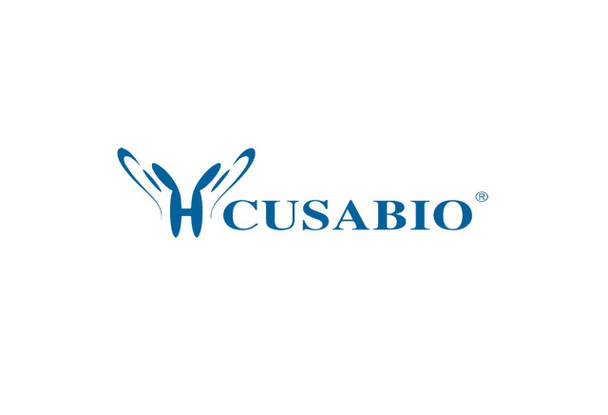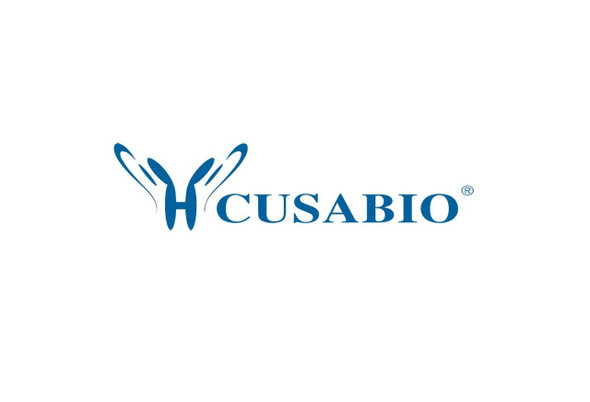Cusabio Human Recombinants
Recombinant Human Probable DNA dC->dU-editing enzyme APOBEC-3C (APOBEC3C) | CSB-EP889097HU
- SKU:
- CSB-EP889097HU
- Availability:
- 13 - 23 Working Days
Description
Recombinant Human Probable DNA dC->dU-editing enzyme APOBEC-3C (APOBEC3C) | CSB-EP889097HU | Cusabio
Alternative Name(s): APOBEC1-like Phorbolin I
Gene Names: APOBEC3C
Research Areas: Epigenetics and Nuclear Signaling
Organism: Homo sapiens (Human)
AA Sequence: MNPQIRNPMKAMYPGTFYFQFKNLWEANDRDETWLCFTVEGIKRRSVVSWKTGVFRNQVDSETHCHAERCFLSWFCDDILSPNTKYQVTWYTSWSPCPDCAGEVAEFLARHSNVNLTIFTARLYYFQYPCYQEGLRSLSQEGVAVEIMDYEDFKYCWENFVYNDNEPFKPWKGLKTNFRLLKRRLRESLQ
Source: E.coli
Tag Info: N-terminal GST-tagged
Expression Region: 1-190aa
Sequence Info: Full Length of BC011739
MW: 49.8 kDa
Purity: Greater than 90% as determined by SDS-PAGE.
Relevance: DNA deaminase (cytidine deaminase) which acts as an inhibitor of retrovirus replication and retrotransposon mobility via deaminase-dependent and -independent mechanisms. After the penetration of retroviral nucleocapsids into target cells of infection and the initiation of reverse transcription, it can induce the conversion of cytosine to uracil in the minus-sense single-strand viral DNA, leading to G-to-A hypermutations in the subsequent plus-strand viral DNA. The resultant detrimental levels of mutations in the proviral genome, along with a deamination-independent mechanism that works prior to the proviral integration, together exert efficient antiretroviral effects in infected target cells. Selectively targets single-stranded DNA and does not deaminate double-stranded DNA or single-or double-stranded RNA. Exhibits antiviral activity against simian immunodeficiency virus (SIV), hepatitis B virus (HBV), herpes simplex virus 1 (HHV-1) and Epstein-Barr virus (EBV) and may inhibit the mobility of LTR and non-LTR retrotransposons. May also play a role in the epigenetic regulation of gene expression through the process of active DNA demethylation.
Reference: "Novel genes expressed in hematopoietic stem/progenitor cells from myelodysplastic syndrome patients." Gu J., Huang Q., Yu Y., Xu S., Wang Y., Han Z., Chen Z., Zhou J., Tu Y., Gu W., Fu G., Huang C. Submitted (JUL-1999)
Storage: The shelf life is related to many factors, storage state, buffer ingredients, storage temperature and the stability of the protein itself. Generally, the shelf life of liquid form is 6 months at -20?/-80?. The shelf life of lyophilized form is 12 months at -20?/-80?.
Notes: Repeated freezing and thawing is not recommended. Store working aliquots at 4? for up to one week.
Function: DNA deaminase (cytidine deaminase) which acts as an inhibitor of retrovirus replication and retrotransposon mobility via deaminase-dependent and -independent mechanisms. After the penetration of retroviral nucleocapsids into target cells of infection and the initiation of reverse transcription, it can induce the conversion of cytosine to uracil in the minus-sense single-strand viral DNA, leading to G-to-A hypermutations in the subsequent plus-strand viral DNA. The resultant detrimental levels of mutations in the proviral genome, along with a deamination-independent mechanism that works prior to the proviral integration, together exert efficient antiretroviral effects in infected target cells. Selectively targets single-stranded DNA and does not deaminate double-stranded DNA or single-or double-stranded RNA. Exhibits antiviral activity against simian immunodeficiency virus (SIV), hepatitis B virus (HBV), herpes simplex virus 1 (HHV-1) and Epstein-Barr virus (EBV) and may inhibit the mobility of LTR and non-LTR retrotransposons. May also play a role in the epigenetic regulation of gene expression through the process of active DNA demethylation.
Involvement in disease:
Subcellular Location: Nucleus, Cytoplasm
Protein Families: Cytidine and deoxycytidylate deaminase family
Tissue Specificity: Expressed in spleen, testes, peripherical blood lymphocytes, heart, thymus, prostate and ovary.
Paythway:
Form: Liquid or Lyophilized powder
Buffer: If the delivery form is liquid, the default storage buffer is Tris/PBS-based buffer, 5%-50% glycerol. If the delivery form is lyophilized powder, the buffer before lyophilization is Tris/PBS-based buffer, 6% Trehalose, pH 8.0.
Reconstitution: We recommend that this vial be briefly centrifuged prior to opening to bring the contents to the bottom. Please reconstitute protein in deionized sterile water to a concentration of 0.1-1.0 mg/mL.We recommend to add 5-50% of glycerol (final concentration) and aliquot for long-term storage at -20?/-80?. Our default final concentration of glycerol is 50%. Customers could use it as reference.
Uniprot ID: Q9NRW3
HGNC Database Link: HGNC
UniGene Database Link: UniGene
KEGG Database Link: KEGG
STRING Database Link: STRING
OMIM Database Link: OMIM









